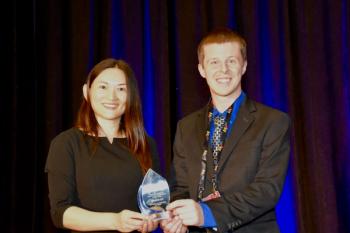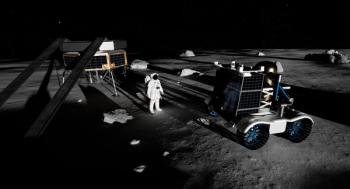
MIRTHE Workshop on Air Quality Monitoring Related to Energy Extraction Workshop Highlights Role of Mid-IR Spectroscopy
The Mid-Infrared Technologies for Health and the Environment (MIRTHE) center hosted a workshop titled “Air Quality Monitoring Related to Energy Extraction†on Friday, August 9, 2013 at Princeton University (Princeton, New Jersey). The workshop was well attended and highlighted some of the key issues surrounding energy extraction.
The Mid-Infrared Technologies for Health and the Environment (MIRTHE) center hosted a workshop titled “Air Quality Monitoring Related to Energy Extraction” on Friday, August 9, 2013 at Princeton University (Princeton, New Jersey). The workshop was well attended and highlighted some of the key issues surrounding energy extraction and the use of mid-IR methods in measuring emissions from these activities.
The workshop opened with a brief welcome and overview of MIRTHE from Claire Gmachl, the MIRTHE director at Princeton University. Followed by that was the first presentation by Corrie Clark of the Environmental Science Division at Argonne National Laboratory in Argonne, Illinois, titled “Fracking 101 — Benefits, Opportunities, and Future Challenges.” Clark went over the basics of this energy extraction technique for shale gas, usually referred to as “fracking” because of the network of fractures that are created within the Earth’s crust. The talk gave the audience a lot of information that proved useful for the rest of the day’s presentations. Clark also went over the environmental impacts fracking can have on air, water, and land, as well as solutions and policy changes that are being examined.
The second presentation, “Technology Trends for the Hydraulic Fracturing of Unconventional Reservoirs,” was given by Alejando Pena of Schlumberger in Sugar Land, Texas. Pena discussed the overall market for this energy source and the future outlook for the United States to become a world leader in it. He also explained new technologies that his company is developing to help safely frack new sites, including a microseismic mapping tool for what he termed “fracture modeling.” This technology would reportedly enable users to determine safe locations to drill into the Earth and help predict the locations of the fractures. It would also result in a significant savings on proppant (a solid material, typically treated sand or man-made ceramic materials, designed to keep an induced hydraulic fracture open, during or following a fracturing treatment), water, and trucking use.
Michael Wojcik of the Space Dynamics Laboratory at Utah State University Research Foundation in Logan, Utah, gave the next talk, titled “Understanding the Regulatory Context for Fugitive Emissions Measurement.” Wojcik explained some of the issues regulators face with fracking, such as short timeframes to gather massive amounts of data that are validated by Environmental Protection Agency (EPA) methods. He also explained that in the United States each state has different rules and regulations for fracking. For instance, Utah does not have many regulations in place right now, whereas Colorado and Wyoming are much more restrictive in what they allow.
The afternoon sessions focused on the state of the art and potential for new monitoring solutions. The first afternoon talk, “Open-Path Methane Sensing Across an Artic Lake,” was given by Anna P.M. Michel of the Department of Applied Ocean Physics and Engineering at Woods Hole Oceanographic Institution in Woods Hole, Massachusetts. Michel’s talk focused on naturally occurring sources of methane, which are often poorly quantified. Research has shown that ebullition (bubbling) and warming environments are the biggest reasons for lakes emitting methane. Michel discussed the open-path, long (> 1 km) integrated path quantum cascade laser-based methane sensor to characterize the spatial and temporal variability of methane emissions at Toolik Lake in Alaska that her group developed.
“Current and Emerging Laser Sensors for Greenhouse Gas Detection and Monitoring,” was the next talk, given by Michael B. Frish of Physical Sciences, Inc., in Andover, Massachusetts. Frish described the various lasers that are available today and the work he has been doing to monitor greenhouse gas emissions of methane and carbon dioxide. He posed a challenge to the community to work on creating a chip-based tunable diode laser absorption spectroscopy (TDLAS) instrument, as small as a cell phone and using wireless communication. Frish stressed that technology such as that is possible to achieve and would help drive down costs for companies to self-monitor their emissions.
Leigh Bromley of Daylight Solutions in San Diego, California, gave the next talk, titled “State of the Art Mid-IR QCL Systems & Applications — Potential for New Monitoring System Solutions.” Bromley highlighted the instruments offered by his company and the various opportunities they present to users. He cited new research by Charles Harb of the University of New South Wales, Australia, in which Harb is using Daylight Solution’s pulsed cavity ringdown spectroscopy (CDRS) instrument for environmental applications and the detection of improvised explosive devices (IEDs).
Mark A. Zondlo gave the final presentation of the day, titled “Shale Gas Fugitive Methane Emissions Using UAV- and Vehicle-Based Sensors.” Zondlo explained that the transition from coal to natural gas sources of energy should be beneficial for the Earth’s climate because natural gas combustion produces only half the carbon dioxide emissions compared to coal on a per unit energy basis. However, a cause for concern is the fact that fugitive methane emissions from the exploration and production sector of the oil and gas industry range from about 3–9% of the total field production and methane is 25 times more potent as a greenhouse gas on a per molecule basis then carbon dioxide. Zondlo stressed that methane emissions above 1% would negate any positive climate benefits of switching from coal to natural gas. To measure these emissions more closely, Zondlo and his group have developed vertical cavity and quantum cascade laser-based systems on unmanned aerial vehicles and passenger cars. His research thus far has included field studies to identify and quantify emissions from case studies of wells on the Barnett, Marcellus, and Monterey shale sites. Zondlo explained that they use high-resolution mapping to chemically fingerprint sources from gas and oil extraction, landfills, natural wetlands, and combustion.
The workshop concluded with a panel discussion with all of the speakers. For more information on this subject, or to see speaker’s slides, visit the MIRTHE website:
Newsletter
Get essential updates on the latest spectroscopy technologies, regulatory standards, and best practices—subscribe today to Spectroscopy.




